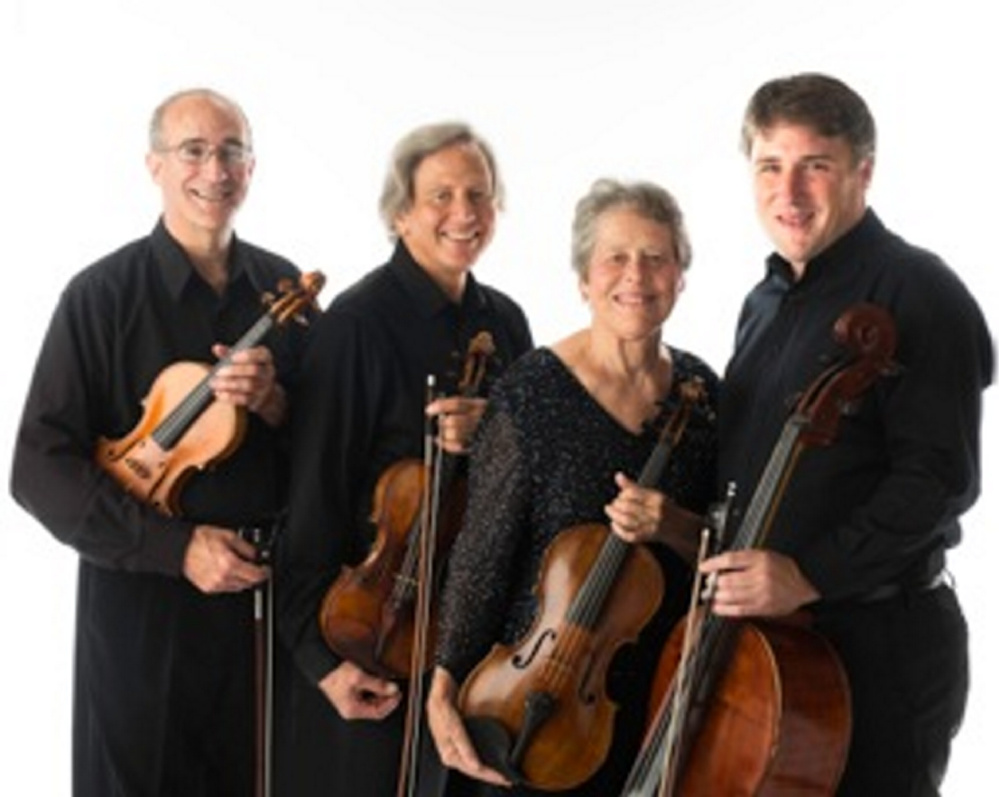There were two lessons to be drawn from the Portland String Quartet’s first concert of the season Sunday afternoon at Woodfords Congregational Church. The first, and more crucial one, is that works that tap into history’s darker currents, and put recognizable faces on them, make irresistibly compelling listening, even if the composers’ backgrounds and styles are as disparate as can be. The second, probably inadvertent lesson is that it makes sense to begin with a built-in warm-up piece, a short work that has so little to do with the rest of the program that if it doesn’t go well, it can be forgotten without tarnishing the memory of the major part of the program.
The quartet, which typically gives finely polished performances, took a few moments to settle into its curtain-raiser, Hugo Wolf’s cheerfully tuneful “Italian Serenade,” a graceful if tongue-in-cheek portrait of a suitor singing outside his beloved’s window.
Wolf was a consummate songwriter, of course, and though this serenade is instrumental, the vocal impulse – the sense of the singer making his case – comes through beautifully. Or it would have, in a reading that did not seesaw between moments of shrillness and warmth quite as much as this one did. Thankfully, whatever kinks the quartet was fighting were worked out before the score’s final pages and were not heard again.
The concert’s centerpiece was Tom Myron’s “Käthe Kollwitz,” a score that the quartet’s violist, Julia Adams, commissioned as part of the group’s 30th anniversary celebrations in 1998. Myron, who was the Portland Symphony Orchestra’s resident composer at the time (and now lives in Northampton, Massachusetts) responded with a five-movement score for soprano and quartet, based on Muriel Rukeyser’s cycle of poems about Kollwitz, a German visual artist who focused on war and its attendant privations on women, children and the poor. She died in April 1945.
Rukeyser’s poetry, inspired by Kollwitz’s surviving artworks (many were destroyed during World War II), is nuanced and philosophical, particularly when it quotes from the artist’s diaries, and it raises questions that are always worth pondering. Myron’s music amplifies its melancholy undercurrents, as well as its sense of emotional dislocation. But if the music is dark and tense, it is never really bleak.
Through much of the work, the spotlight is naturally on the soprano line, which Luette Saul endowed with suppleness and a direct, palpable emotional power. But Myron’s quartet writing is consistently striking as well. The work’s center of gravity is its unusual third movement, “The World Split Open,” in which the soprano sings the full text unaccompanied, and the quartet follows with an extended instrumental soliloquy. Both Saul and the ensemble were at their most compelling here.
The quartet devoted the second half of the concert to a suitable companion piece for the Myron, Shostakovich’s Quartet No. 5 in F major (Op. 92). Here the darkness is personal rather than public, but it is just as powerful.
Having been denounced as a “formalist” (whatever that was supposed to mean) by the Soviet authorities in 1948, Shostakovich wrote this pained, three-movement meditation in 1952, and decided not to have it performed. Fortunately, the self-imposed ban did not last long. With Stalin’s death in 1953, Shostakovich felt free to test the waters, and he allowed the premiere of the work nearly a year after he completed it.
The score is filled with characteristic Shostakovich moves – icy, insistent figures at the top of the violin’s range; moments of apparent calm that give way to a disturbing intensity; and turbulent, dramatic passages that resolve over time into wrenching introspection. But there is defiance here too, also typical of Shostakovich. You hear it in the complex expansions on a waltz theme, in the finale, and in Shostakovich’s use of a four-note motto (D, E-flat, C, B) that he used as his signature in several works.
The Portland players – Dean Stein and Ronald Lantz, violinists; Patrick Owen, cellist; and Adams on viola – gave the work a focused, warm-toned reading that pulled the listener into Shostakovich’s world of disappointment, anger and alternating currents of hope and hopelessness.
Allan Kozinn is a former music critic and culture writer for The New York Times who lives in Portland. He can be contacted at:
allankozinn@gmail.com
Twitter: kozinn
Send questions/comments to the editors.


